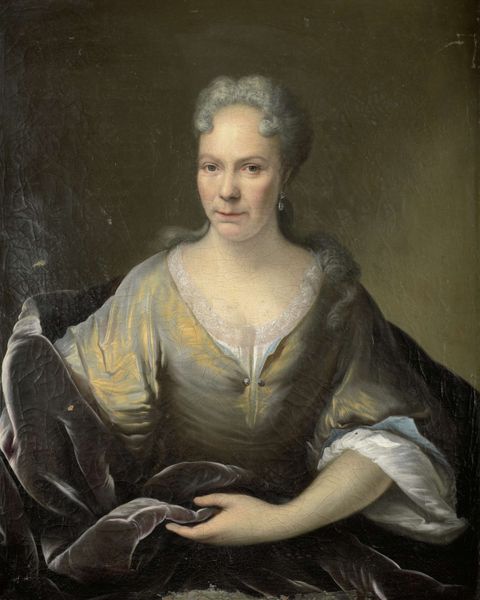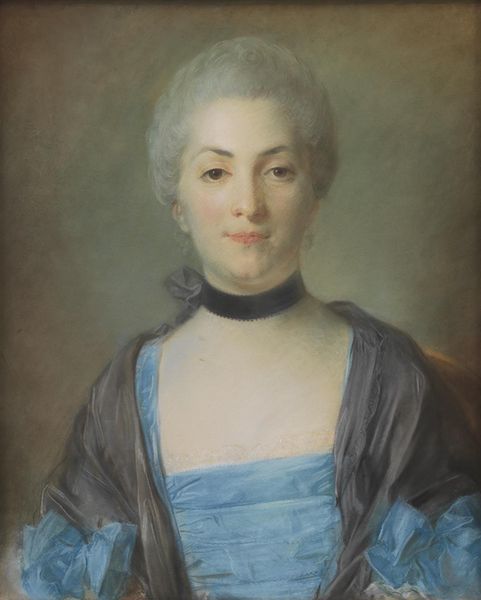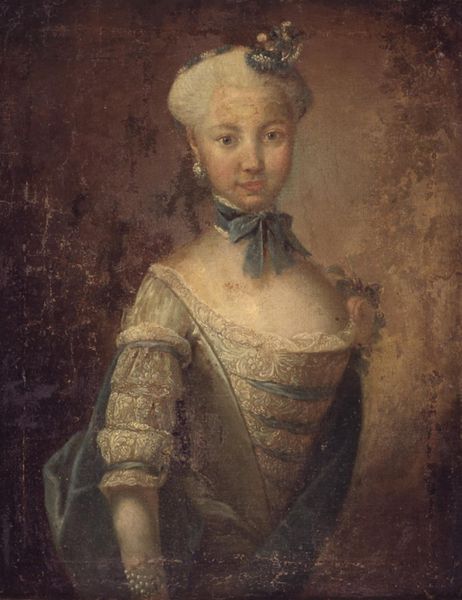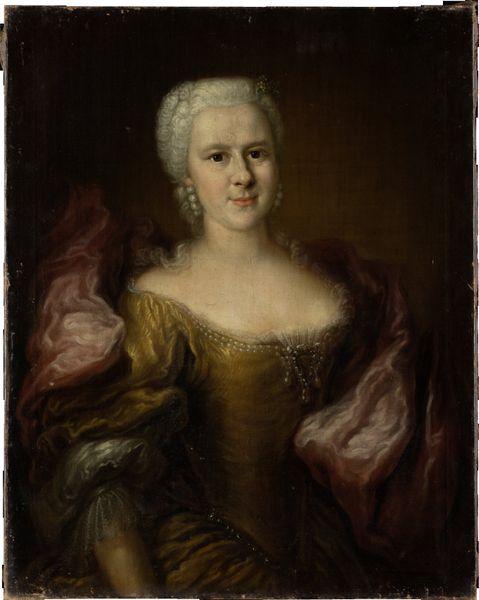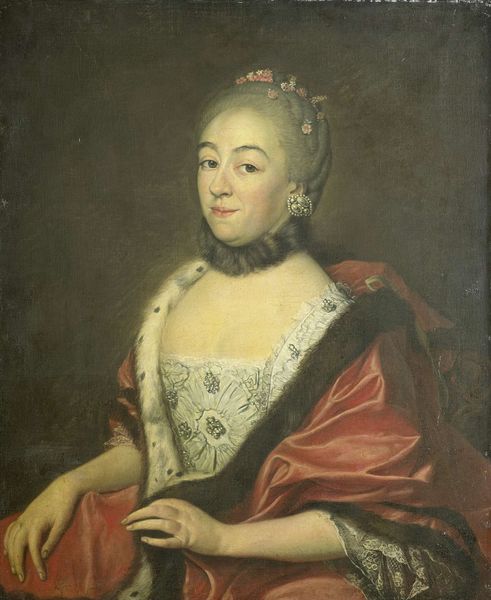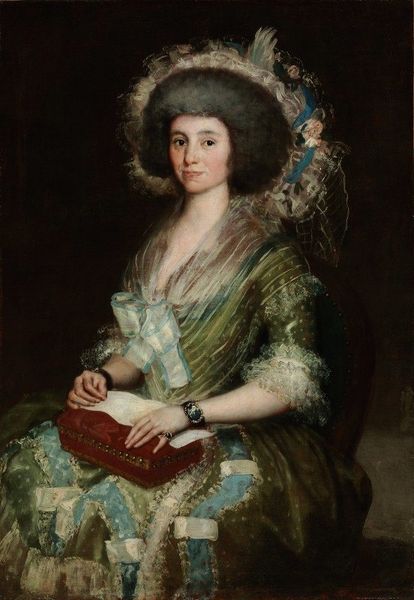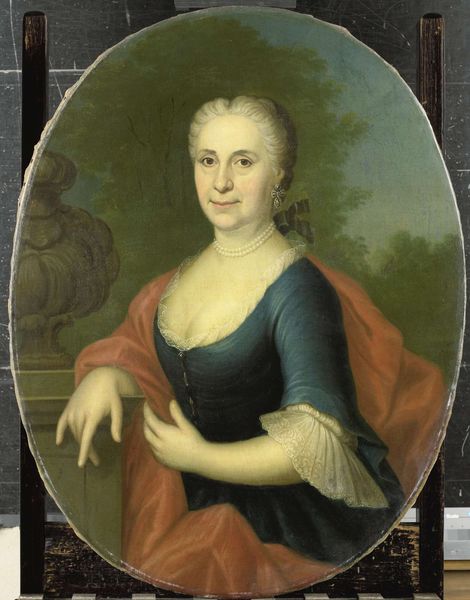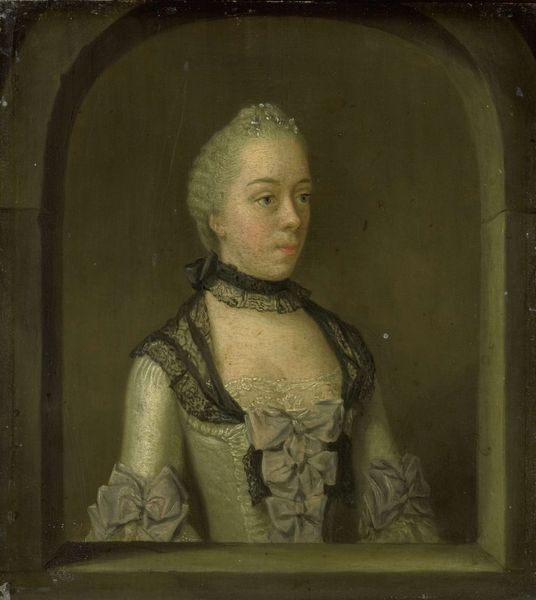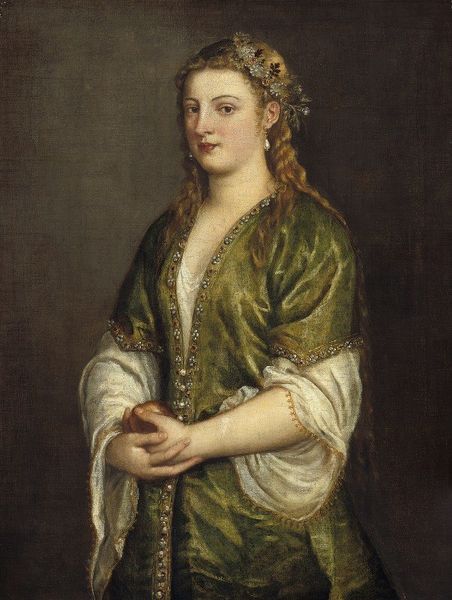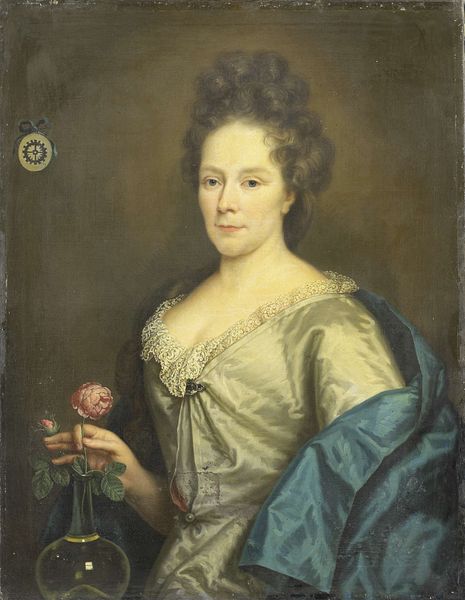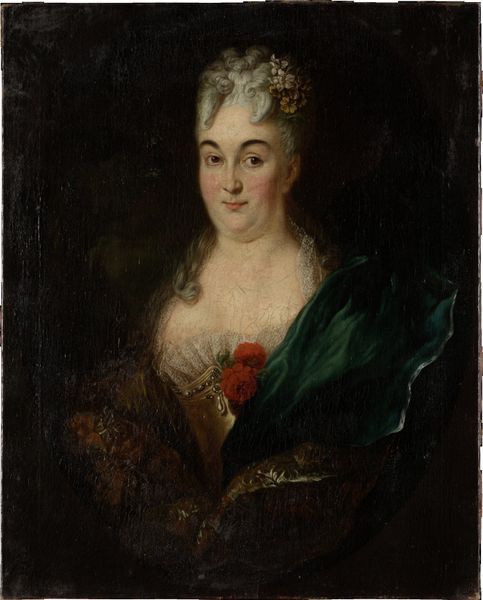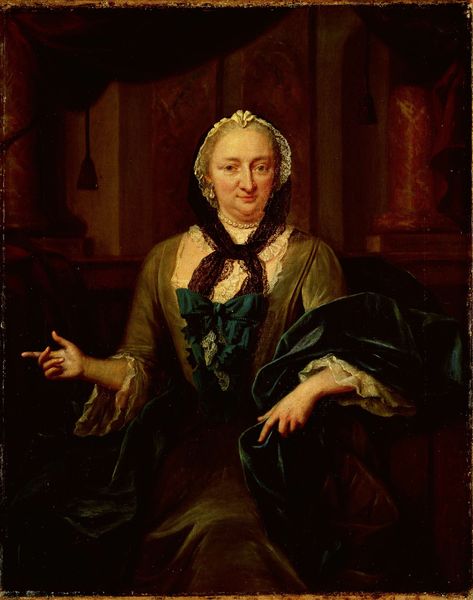
Portrait of Petronella Kettingh (1632-1707), Wife of Diederik van Hogendorp c. 1690
0:00
0:00
oil-paint
#
portrait
#
baroque
#
dutch-golden-age
#
oil-paint
#
oil painting
#
genre-painting
#
realism
Dimensions: height 86 cm, width 68 cm, depth 5.5 cm
Copyright: Rijks Museum: Open Domain
Curator: The first impression I get is one of reserved elegance; the textures are wonderfully rendered, particularly the interplay between the lace and the sheen of the silk. Editor: Here we have a portrait dating from around 1690, titled "Portrait of Petronella Kettingh, Wife of Diederik van Hogendorp". Painted in oil, it captures the likeness of a woman from the Dutch Golden Age. What do you notice in terms of materiality or craft? Curator: The clear emphasis is on wealth and status. The fur trim, the silk gown, and elaborate lace—each element speaks to the economic standing of the sitter and, by extension, her family. Editor: Precisely! The painting's creation was intertwined with the labor of numerous artisans. The materials, such as the expensive pigments, would have been acquired through extensive trade networks. What else do you think a close look reveals? Curator: Well, looking at the surface, I see a delicate layering of glazes. The artist expertly manipulates light to suggest volume and depth. Observe, also, how the warm, subdued palette creates a sense of intimacy despite the formal nature of the portrait. There's something about the construction of this piece that focuses the viewer’s attention squarely on Petronella. Editor: Yes, and that kind of visual construction and presentation also conveys clear social messages about Dutch society during that era. This portrait speaks volumes about marriage as a strategic alliance between families, and a visual display of wealth consolidation in that period. Her guarded gaze and closed-off stance tells us she isn't selling dreams; she's got solid material achievements to show. Curator: Agreed. Ultimately, what stands out is the controlled stillness—it's a composition that truly captures a sense of prosperity and guarded grace. Editor: And by deconstructing this portrait through attention to materials and their broader societal context, we can gain a greater appreciation of the complexities embedded within seemingly straightforward artistic pieces.
Comments
No comments
Be the first to comment and join the conversation on the ultimate creative platform.
